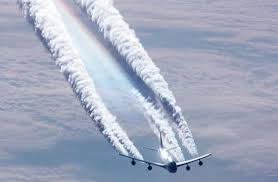A hazard in Aircraft Maintenance is no different from any other Hazard in respect that whilst it is “dormant” under certain circumstances it has the potential to do harm.
Identification of Hazards describes the process of understanding either the exposures risks or the actual failure.
In respect of the potential consequences there are a number of definitions.
Hazard – A condition that poses a level of threat to life, health, property, or environment.
Safety Event – An exposure or contributing event which alone or in combination could result in an unwelcome event.
Undesirable Event – A stage in the escalation of an event which could without an active recovery measure become an incident or accident.
Incident – A hazardous situation that has come to pass is called an incident.
Outcome – Actual or Potential scenario and may be assigned a consequence severity.
Consequence – A measure of personnel injury, equipment damage, material loss or reduction in availability of function.
Note 1
ICAO identifies an accident as an occurrence, where a person is fatally or seriously injured or the aircraft sustains damage or structural failure.
Note 2
ICAO identifies an incident as an occurrence, other than an accident, associated with the operation of an aircraft which affects or could affect the safety of operation.
Risk Controls – Any system, activity, action or procedure introduced to reduce the risks associated with a hazard.
Mitigation options include – Elimination of the hazard or Reduction in the frequency of the hazard by impacting either the likelihood or severity of outcome.
There are essentially two ways the hazard will come to our attention, either through the raising of an issue by a contributor, through incident, accident or observation, or by identifying the risk or exposure through various organisational processes designed to identify the problems.
a) The raising of an issue
There are typically 2 reasons why this will happen:
i/ Because something has happened and it has to be reported
ii/ Because something could happen and it should be reported
In respect of (i) we have to make sure that all maintenance personal are aware of the reporting procedures.
In respect of (ii) we are faced with behavioural and cultural issues, there is a tendency within the maintenance environment to under report or to fail to report
b) By identifying the risk or exposure through various organisational processes designed to identify the problems.
Organization Tools which may be employed to support the mitigation of hazards include:
i/ Selective Brainstorming of selected Personnel (Qualitive)
ii/ Focused studies aimed at exposing Hazards (Qualitive)
iii/ Checklists (Qualitive)
iv/ Audits (Qualitive)
v/ Surveys (Qualitive)
vi/ Continuous Collection of Data through feedback activities (Quantative)
Next Steps
Follow this link to our Library to find & Download related documents for Free.
Sofema Aviation Services & Sofema Online provide classroom, webinar & online training. For additional information please email team@sassofia.com
Tags:
Aircraft Maintenance, Identification of Hazards, Maintenance Error Management Systems, Risk Management, Sofema Aviation Services




